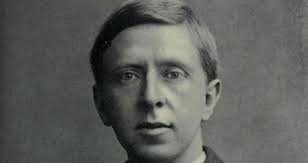Chapter 5 of Monsignor Robert Hugh Benson’s Non-Catholic Denominations is a very fair treatment of the Low Church party within the Church of England, as it was in 1910, the year of the publication of this excellent volume.
In the course of setting out the distinctive Low Church doctrines of Communion, Benson notes that the minister stands at the north end of the Table (not an altar) because: “Rightly or wrongly, what is known as the Eastward position (that is the standing of the minister with his back to the people) is taken to symbolize a sacrificial attitude; and many fierce controversies and heart-burnings have been the result of indiscretion in this matter.” He points out that by standing facing the people, the appearance is of “one presiding over a feast or meal …” (66).
The minister is not a priest, because that would mean he was some sort of intermediary between the people and God, and that idea is inimical to their faith. Benson then makes the important point that:
It is in virtue of this doctrine too that so intense an hostility exists in the Low Church party towards any veneration paid to Mary or the Saints since that veneration, it is thought, necessarily implies an idea of mediatorship other than that of the Great High Priest. (67)
Much as we disagree with this, understanding this is vital to understanding the non-Catholic position. I would say that the fact of veneration to Our Lady and the saints proves our belief that Christ is our mediator, because we always ask them to intercede for us. Benson also makes a significant point about how scripture is used in controversy:
It is extraordinarily difficult, and rather fruitless … to argue on Scriptural grounds with the Low Churchman. He has these well-known texts, from Gospels and Epistles alike, at his fingers ends and can discharge them with extraordinary rapidity and accuracy of aim. And any attempt to meet them by others is useless, since these others are always held to be nullified, or rather interpreted away by those in which he himself places reliance (72).
How then to help the Low Church Anglican come to the truth? Benson advises:
The argument then must be made to rest rather upon common sense. It may be pointed out, for instance, with advantage, that as a Rule of Faith, Private Judgment acting upon Scripture direct, would scarcely have been of avail in days before the Canon of Scripture was closed; that even in the present day this Rule of Faith is fruitful of division rather than of union, since it has produced above two hundred sects in England alone, each claiming that its own is the most perfect presentment of Christ’s Gospel; and finally it may be asked what is to be made of this professedly infallible Rule of Faith if it leads a soul as it has led so many to the conclusion that the Catholic Church was intended by Christ to be the sole guardian of Truth. Of course the Low Churchman has answers to all these observations; yet, if victory is to be gained, it would seem that its path must lie in this direction rather than in the bandying of texts from the Scriptures (72-73).
This is wise advice, and I take what I hope is a legitimate pleasure in the precision and elegance of Benson’s excellent literary style. The point to which Benson is tending here is, of course, that of authority: if Private Judgment is not the way to understand Scripture, there must be an authority. For arguments as to why that authority is the Catholic Church, see Taylor Marshall’s Origins of Catholicism series (reviewed on this site).
Benson then makes the point that, as a rule, Anglicans are orthodox when it comes to the teachings of the Blessed Trinity, the Incarnation and the Atonement. This means that:
With regard to the rest of his beliefs, too, his errors are negative rather than positive; his negations are false, but very few of his affirmations. He denies Priesthood, not because he disbelieves in its existence, but because he thinks that any earthly derived priesthood (other than that understood vaguely by him to belong to the whole people of God) is derogatory to Christ’s Supreme Office … (and that) any belief in real Sacramental grace, to the sole Author of grace. His errors then are the result of confusion of thought and narrowness of outlook and unbalanced zeal, rather than of any positive falsehood. He is so tenacious of certain truths that he rejects others that appear to him incompatible with those he holds already: he is so … convinced of the value of faith that he denies that of works (73-74, italics added).
This is a profound insight: that these people generally mean well, and they do hold to something true, but so narrowly that they lose the whole of the truth. It has more application than to just Low Church Anglicans: it often applies to ourselves as well.

Much of the objections against the Catholic Church, were miss conceived understanding of what the actual church teachers. The most difficult part of the communication process was keeping the Protestant on track. he wanted to attack the church with many bullets. so I had tried to narrow down as to what was the most pressing question over all the questions. even this was a difficult task. it was like trying to plug holes in a dam that was getting bigger and bigger. you can only talk to a Protestant about the Catholic Church who is a willing listener. The listening has to be on both sides. I tried to defend the teachings not the men who run the church. During a discussion I have been having with a Protestant, it was pointed out to me that there were corrupt Pope‘s and other financial corruption in the Catholic Church. to this, I agreed, saying yes you are correct.